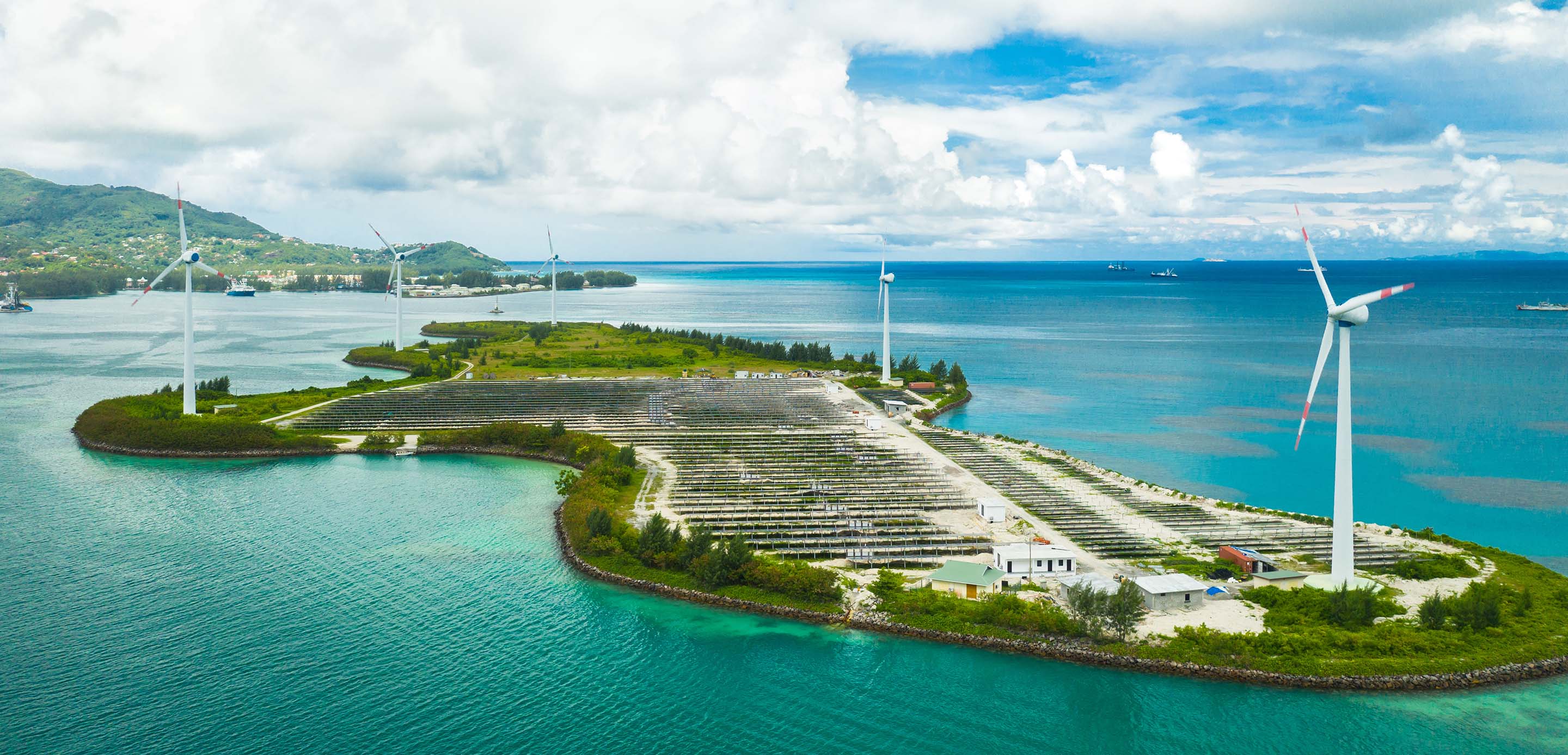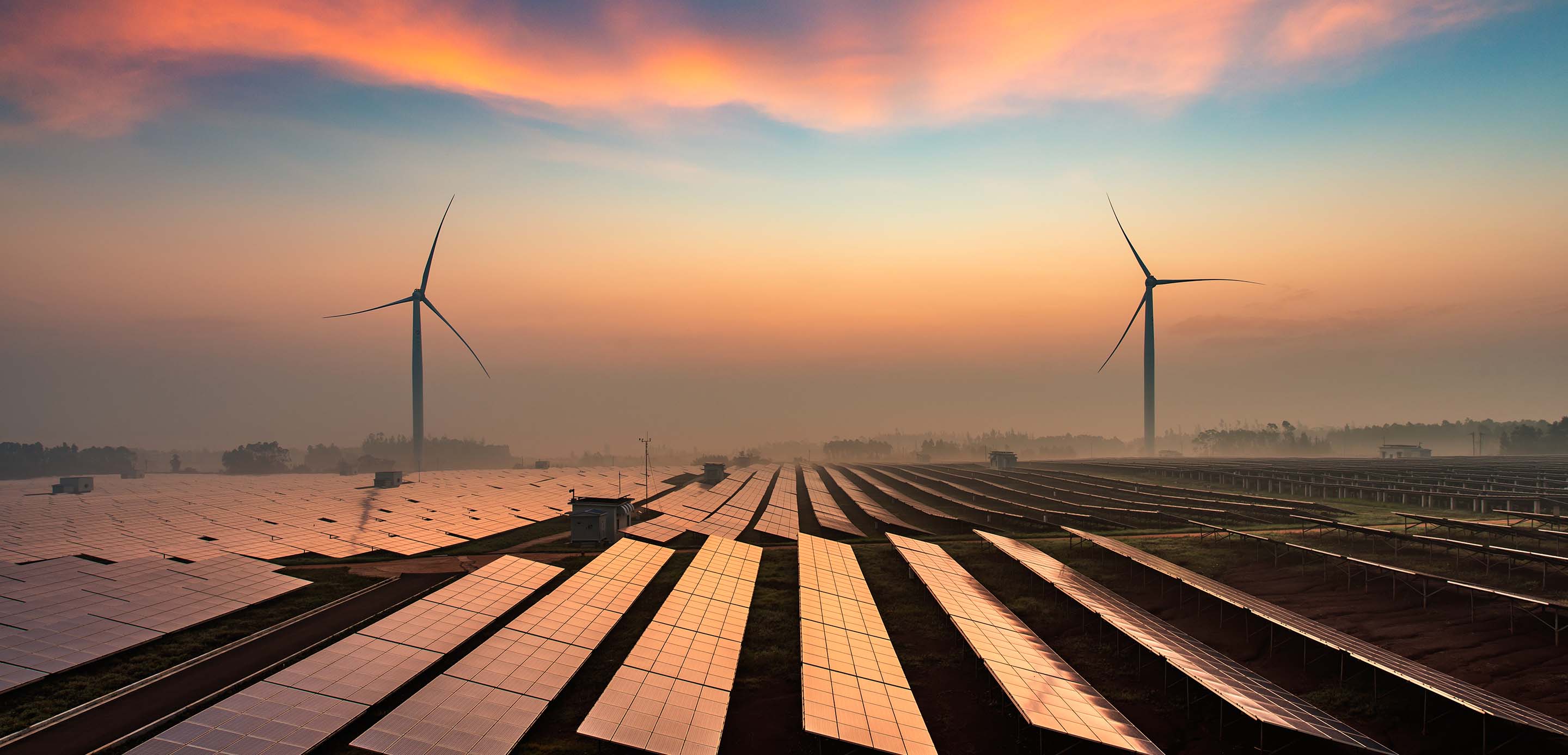- Article

- Sustainability
- Transition to Net Zero
- Economic
Can financial innovation mitigate climate risk?
While the global economy adapts to the increasingly stark realities of climate change, both the cleantech and energy transition sectors continue to evolve.
With an influx of climate finance funding breakthrough technologies and ESG criteria becoming a portfolio mainstay, there’s an emergence of new investment opportunities and financial instruments. But what does this financial innovation look like, and how is it addressing climate risk? Are these passing trends or precursors to an altered financial future?
Farnam Bidgoli, Head of ESG Solutions at HSBC, alongside leading experts from both energy technology and global investment firms, discussed financial innovation’s growing role in climate and cleantech at S&P Global’s recent CERAWeek conference.
Today’s green economy
Capital is pouring into cleantech, climate, and energy transition opportunities. Through investment and green finance, the sector has secured trillions of dollars’ worth of interest – and this seems to be only the beginning. The global need for climate solutions, the sector’s need for capital, and the potential reward/return opportunities, make the space increasingly attractive.
After the initial wave of investment into clean and new energy tech a decade ago, interest began to slow. However, a second wave has now superseded the first. Today, the green and sustainably demands of investors are immense.
Breakthrough cleantech
Despite the growing appetite for green finance and cleantech opportunities, Farnam Bidgoli explains that the situation remains nuanced.
“A lot of institutional investors still don’t have the risk appetite for the breakthrough technologies. We see a lot of interest in the mature sectors: in renewables and electric vehicles, for example. When it comes to technologies that are more transitional, or potentially a little bit more early stage, we’re still struggling both in terms of banks and other financial intermediaries to deploy into that effectively.
“In public equity markets, there is definitely upside for those that have a very easy story when it comes to the transition – renewables being the primary one. With those coming into enabling or facilitating technology, or where the story is a little bit more complicated, we don't see the same enthusiasm.”
So, how do financial institutions approach the challenge of project selection, and managing a successfully green balance sheet, when it comes to breakthrough technology in the energy and cleantech sectors?
For many, sticking to proven, sustainable business models that are ready to scale helps reduce investment risk. And, in comparison to the sector’s first wave, today’s lower tech costs increase margins, and therefore profit. But for HSBC, developing a deep internal understanding of the sector is vital when it comes to mitigating risk, and maximising financing opportunities.
“We’re trying to play in more parts of the ecosystem. We made a $100 million investment Breakthrough Energy Catalyst, a programme that uses public-private capital to fund the development of clean technologies, so we can be more involved at the beginning stages. This will also help us build capacity internally to better understand new technologies. We’re also involved with partnerships with multi-lateral development banks to deploy blended capital, and we sit on the Energy Transition Commission, which has done a lot of thinking about the pathways towards decarbonisation.
“With these investments and initiatives, we are also building our internal capacity so that when something comes to us for financing, we can better understand the risk and return dynamics. But it is really challenging,” says Bidgoli.
Green finance
In the public debt market, the meteoric rise in appetite for green, social and sustainable bonds has created a significant pricing advantage for the issuer, in what has been termed a “Greenium.” Last year, green, social, sustainable and sustainability-linked bond issuance broke the trillion-dollar mark, a milestone which was, until recently, unimaginable. However, as Bidgoli explains, we can expect to see this pricing advantage begin to slowly fall, as bond volume increases.
“In terms of investment-grade credit, we pretty consistently see a pricing advantage of at least 5 bps. In the high-yield market, it is a little bit higher than that. In my view, that's a reflection of supply and demand dynamics – that demand for these instruments is far exceeding supply, which supports price tension that can be leveraged to the benefit of the issuer. In investment-grade credit markets, there's a significant universe of funds that are either targeting green, social, sustainable bonds, or have broader ESG mandates.”
Green equity remains a newer, and comparably niche space. Some have tried to position themselves in this area, using labels and certifications to position a venture’s green credentials; however, there are questions around the approaches’ focus on criteria over impact.
“Ultimately, considering all equity is fungible, saying that a tranche of equity is going to be green versus not is probably not the right way of thinking about it. Rather, you should be looking at the issuer holistically, and understanding how their business plays into the transition,” says Bidgoli
Despite this, what can be agreed on is that investors' newfound demand for green and sustainable assets, marks a large and hugely significant shift within the financial markets.
Decarbonisation
Despite the significant role it plays in the transition, the oil and gas sector has been largely absent from green bond issuance.
"The labelled green bond market today excludes oil and gas, and most oil and gas companies have not pursued the use of proceeds approach. Instead, they've adopted the 'sustainably-linked' approach, whereby instead of identifying specific projects for allocation, the instrument itself is tied to sustainability or decarbonisation targets..."
But this exclusion of the decarbonisation solutions being explored by oil and gas companies is not necessarily advisable – from both a financial and environmental perspective.
"When I think about the challenges of the sustainable finance market today, that's the biggest one I see: how we can reconcile the fact that the IEA's Net Zero still has oil production continuing over the next thirty years, and particularly that many of the quick wins over the course of the next decade will come from decarbonisation opportunities within oil and gas. For investors who want to play an active role, there is opportunity in supporting companies in their transition."
But what are the biggest threats facing this space? The panel highlights valuation as a key issue; suggesting the markets are overpromising on return. Is there simply too much capital available for too few opportunities?
Globally, we are fighting the exponential growth of climate change during politically volatile times. Instability and uncertainty are stimulating financial innovation; cleantech is attempting to mitigate climate threat; and investor demands are catalysing a monumental growth in green finance.
From this illuminating CERAWeek discussion, there is a clear conclusion: we need energy solutions, and fast. The result? An unprecedented economic situation, rife with risk, and opportunity.
Further insights

Roadmaps for energy transition
Examining the pathways to a net-zero world, how we can get there, and how we address the short-term challenges of shifting geopolitical shocks and the longer-term challenges around financing and securing a just transition, were the focus of a CERAWeek session featuring Jan Laubjerg, Global Head of Natural Resources at HSBC, alongside Amos Hochstein, Senior Advisor for Global Energy Security, United States Department of State, and Carlos Pascual, Senior Vice President, Global Energy and International Affairs, S&P Global.

Leveraging existing talent – and infrastructure – to fight climate change
Zoë Knight, Managing Director and Group Head of the HSBC Centre of Sustainable Finance, shares her key takeaways from CERAWeek, where she was a speaker. Some 5,000 people, including many experts from the oil and gas industries, came together to discuss industry events and the challenges facing the sector.

Investing in Tomorrow's Energy Infrastructure
At this year's CERAWeek energy conference, Gerry Keefe, Head of Global Banking, Americas, HSBC, joined a panel to explore what tomorrow's energy infrastructure will look like. The importance of alternative fuels to the energy transition, the immense capital investment needed, and how innovative financial products like FAST-Infra will help close the gap, were all key takeaways.


